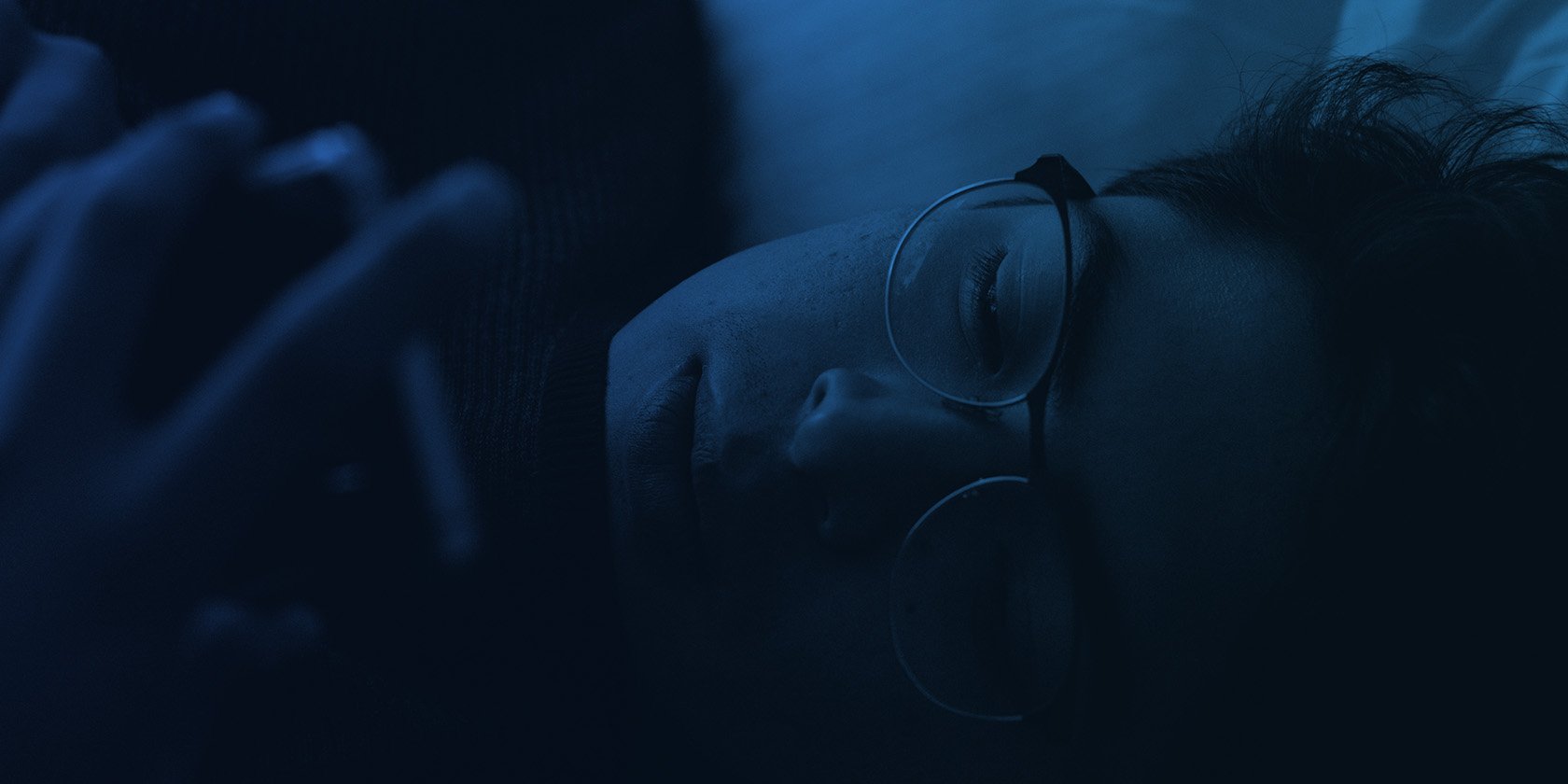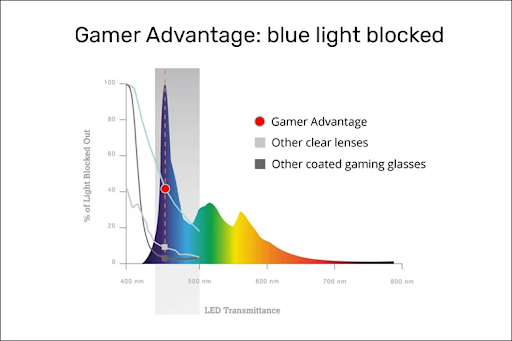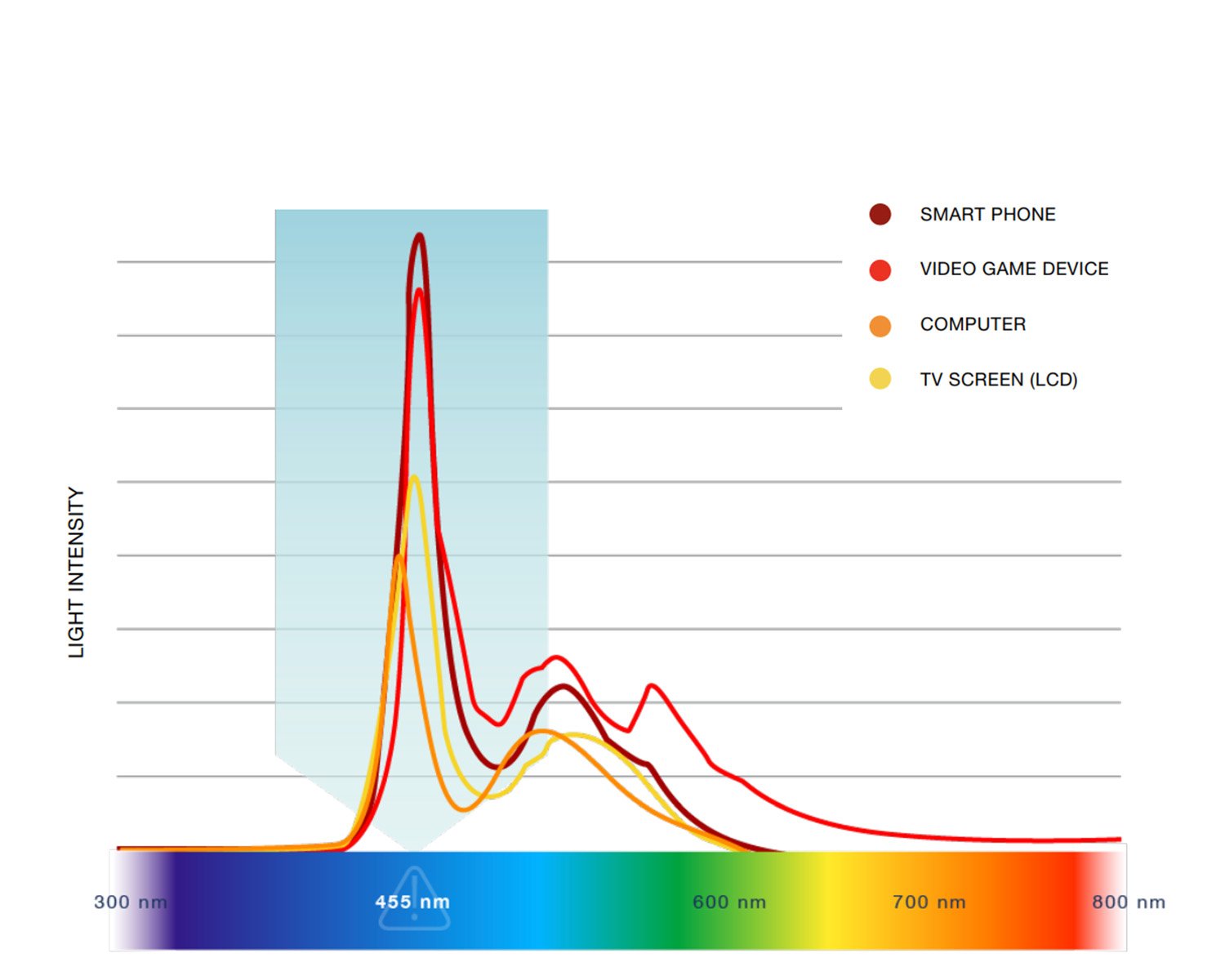Blue Light Basics - What You Need To Know
Blue light. If you spend a lot of time in front of a screen, working, gaming, or writing articles on wellness topics…chances are you have heard about the detriments of blue light on the body.
A quick online search will reveal many companies with claims that their products will negate the harmful effects of blue light, and promise a positive effect on eye health and better and more restful sleep. Academic articles, however, make far less definitive claims, and peer-reviewed research can be found on both sides of the issue. So what exactly is blue light, and what is the truth amid all of the data that surrounds it?
In order to have first-hand experience and perform in-person research, I reached out to and partnered with Gamer Advantage to determine if blue light was as harmful as some research claims and if gaming peripherals can mitigate the harm, and provide health benefits to their users. When approaching them with the idea of a partnership, I did ensure that they were aware that I would conduct my research without bias and would not be curating conclusions on the basis of promotion. All findings, positive or negative, would be the direct result of data and analysis from a health and wellness perspective. An immediate positive was their agreement without hesitation and their ability to provide me with third-party findings from medical professionals that helped to substantiate their claims with data from controlled studies. To understand that data, it helps to understand the basics of blue light, its potential for harm, and the technology that companies like Gamer Advantage use to protect their users.
What is Blue Light?
Blue light is one part of the visible light spectrum, which as its name suggests, contains all of the light the human eye can see. Light is measured in nanometers, and the wavelength determines if it is visible to the human eye, as well as specific qualities unique to certain measurements. Our eyes can see wavelengths of light that measure between 380 to 700 nanometers, with shorter measurements indicating higher energy levels that approach levels seen in UV light. Blue light ranges from 380 to 500 nm and has the highest energy levels. Because blue light has the shortest wavelength and highest intensity out of all visible light, it has the most potential for negative effects.
It is important to note that more blue light comes from natural, outdoor sources than any artificial bulb, screen, or device. In fact, the sun can expose us to up to 250 times more blue light than laptops, cellphones, or indoor lighting. However, this depends on a variety of factors like time of day, weather, and location. In fact, exposure to blue light is normal, and even necessary, as it has been found to have a positive impact on the alertness, reaction time, and energy levels of an individual, so it is important to recognize that avoidance of blue light in all its forms can be harmful as well.
Blue light is capable of producing these effects as one of the primary functions of blue light is to inhibit - or suppress - the body’s production of melatonin. Melatonin is a hormone produced by the pineal gland, a small gland located in the brain, and is responsible for regulating the body’s sleep-wake cycle. This cycle, also known as circadian rhythm, is the natural 24-hour internal clock that influences sleep patterns and other physiological processes. The production and release of melatonin are influenced by the amount of light exposure an individual receives. In the absence of light, typically in the evening and nighttime, the pineal gland is stimulated to produce and release melatonin, which helps prepare the body for sleep. Melatonin levels in the bloodstream increase, promoting feelings of drowsiness and helping to regulate the sleep cycle.
When exposed to the blue light levels emitted by natural sunlight, the body releases less melatonin and knows it’s time to be active and stay awake. This is great for functioning during normal daylight hours, but not so good for winding down at 11 pm after a marathon screen session. In the current digital age, it would be easy for a person to “overdose” on blue light, being exposed to increased levels during the day from a combination of natural outdoor light, computers at work, cell phone use, and then continued exposure after the sun has gone down - from uninterrupted exposure in repeated cell phone use and other handheld devices, computers at home, television use at the end of the day, etc.
Natural vs. Unnatural Sources of Blue Light
This graph shows the intensity of blue light an individual is exposed to from natural light, with peaks during the day and reduced levels after sunset.
With the introduction of LEDs, the average person continues to expose themselves to higher than natural blue light levels, with no rest periods due to its widespread use in work and household devices.
Effects of Blue Light
Frequent and excessive exposure to blue light beyond the natural, outdoor setting has been associated with reduced melatonin levels, the inability to fall asleep, and difficulties staying asleep in otherwise healthy individuals. Blue light blocking glasses utilize lens coatings to prevent increased exposure to these high intensity wavelengths and promote healthier sleep patterns. A pilot study performed on 10 healthy adult males found that half of the subjects had significantly higher levels of melatonin measured in blood samples when wearing BluTech coated lenses than their control counterparts.
It is important to note that while the findings do provide a basis of support for the claims that blue light blocking peripherals provided benefits to their users, a pilot study serves as an initial exploration of a research topic, and involves a small sample size and limited scope. While pilot studies are valuable in providing preliminary insights and identifying potential issues, they may have gaps and omissions that underscore the need for further studies with greater subject diversity.
How does it work?
The reason technology like BluTech works is by focusing on the areas in which a person is most frequently exposed, in the most intense levels. The devices we are exposed to have been found to generate light in the 455nm range. If you plan to purchase blue light blocking lenses, it might be helpful to research the ranges in which they provide the most protection, in order to determine if the focus is within the range that is consistent with your exposure. For example, information provided by Gamer Advantage shows that their lenses block about 40% of light within the 455nm range produced by most devices used by consumers.
Is It the only thing that works?
No. The research behind the effects of blue light is still an ongoing, and heavily debated topic. While the evidence does show that sleep patterns and circadian rhythm is impacted by exposure to blue light, it is less clear that other effects are the result of these wavelengths. Irritation, dry eye, blurry vision, and headaches could be a result of lengthy screen time, and infrequent breaks, rather than the wavelength of light. One of the simplest remedies to prevent symptoms of eye strain is to follow the 20-20-20 rule and look at something 20 feet away, for 20 seconds, every 20 minutes when on your phone, computer, or while watching TV. Another is to enable settings within your handheld device that produce screen dimming or filtering, and to limit the use of devices prior to going to bed, tactics widely recommended by the American Optometric Association.
So while most experts are in agreement that blue light exposure does have negative effects on the time it takes a person to fall asleep, and the sleep quality that they have, there is less agreement on what the person should do about it. Based on the current research, and the most recent findings from studies surrounding this subject, I believe that while there are exercises and behaviors that can help to improve sleep and wellness; I would want to use every option available to me to reduce blue light’s harmful effects. Especially because of the frequency in which I am behind a screen, use handheld devices, and am exposed to other sources of LED light.
I think that with the integration of screens into the work and home life of almost every individual, using every resource, including blue light-blocking lenses, to protect and support the longevity of eye health is important and commendable. Remember, while these measures can help reduce potential risks associated with blue light, it's essential to consult with an eye care professional for personalized advice, especially if you have specific concerns or existing eye conditions.
So why did I choose Gamer Advantage?
One of the first reasons was that I am a gamer, and their marketing is effective. But, more importantly than that, their research was accessible and openly communicated. They provided third-party verification of their claims and other benefits beyond the BluTech coating. For more detailed information on these specific blue light-blocking glasses, and to see my in-depth review of Gamer Advantage’s REZME lenses - check out this article.









